If you’re running a retail business in 2026, we bet you know how important it is to get the best POS inventory system. It is your right-hand man in managing inventory, keeping an eye on sales, and getting along with all channels and platforms. But not every inventory POS system will be your cup of tea. Some might be packed with features you’ll never use, while others might miss the essential ones you need. The big question is, how do you choose the ideal inventory POS system for your business?
Don’t sweat it. The team at Magestore has checked out all the big names in POS systems, looking at what they offer, how much they’ll set you back, and what other folks like you are saying about them. And here are the 5 best POS systems for startups to large retail businesses and restaurants – the kind that can take your business to the next level in 2026.
- Magestore POS: Best POS inventory system for small businesses that also sell online
- Square POS: Best free POS with basic features for small businesses and restaurants
- Toast POS: Best POS for restaurant online ordering and inventory
- eHopper POS: Best POS for small retail and grocery stores
- Heartland Retail POS: Best POS for medium-sized restaurants and retail businesses
What is POS inventory system?
POS inventory system is a helpful assistant that retailers can use to process customer sales and monitor the stock levels of products or ingredients. These systems update your inventory in real-time as items are sold and send you alerts when it’s time to reorder, among other inventory tasks.
Or, if you want a companion in managing your business operations, these POS can help you with order processing, payment checkout, stock inventory, and data synchronization across sales channels. This way, you can avoid out-of-stock or overstock situations and provide a consistent online and in-store customer experience.
5 best POS systems with inventory (compared)
POS provider | Starting price | Processing fees | Key features | Rating on Capterra |
Magestore POS |
| Depending on your chosen payment processing providers |
Depending on your chosen payment processing providers | 4.8/ 5.0 |
Square POS | $0 | 6% + 30 cents – 3.5% + 15 cents per transaction Custom pricing available |
| 4.7/ 5.0 |
PayPal Zettle POS | Free | 2.29% + $0.09 – 3.49% + $0.49 per transaction |
| 4.7/ 5.0 |
eHopper POS | Free for U.S. merchants $10 for others | eHopper Payments: Interchange + 0.25% per transaction Other payment providers: Depend on your chosen services |
| 4.2/ 5.0 |
Lightspeed Retail POS | $207/ month | Lightspeed Payments: Depend on your locations and monthly transaction volumes Other payment providers: Depend on your chosen services |
| 4.1/ 5.0 |
Clover POS | $60/ month | 2.3% + 10¢ – 3.5% + 10¢ per transaction |
| 3.9/ 5.0 |
Epos Now | $349 | Epos Now Payments: 2.6% + 0.10¢ per transaction Other payment providers: Depend on your chosen services |
| 3.3/ 5.0 |
1. Magestore POS: Best POS inventory system for small businesses that also sell online
For small merchants selling both offline and online, whether using Magento or Shopify, Magestore POS offers an affordable and comprehensive inventory management solution.
With Magestore POS, you can access an inventory feature that integrates with popular social media platforms and online marketplaces, including Amazon, Walmart, eBay, Etsy, Facebook, Instagram, and TikTok.
This powerful feature allows you to effortlessly sync your product catalog across multiple channels, reducing the effort of manual product listing and maintaining a unified inventory across all your sales channels.
Additionally, Magestore POS offers competitive pricing and is compatible with a broad range of hardware options. This flexibility allows you to customize your in-store hardware to fit your budget.
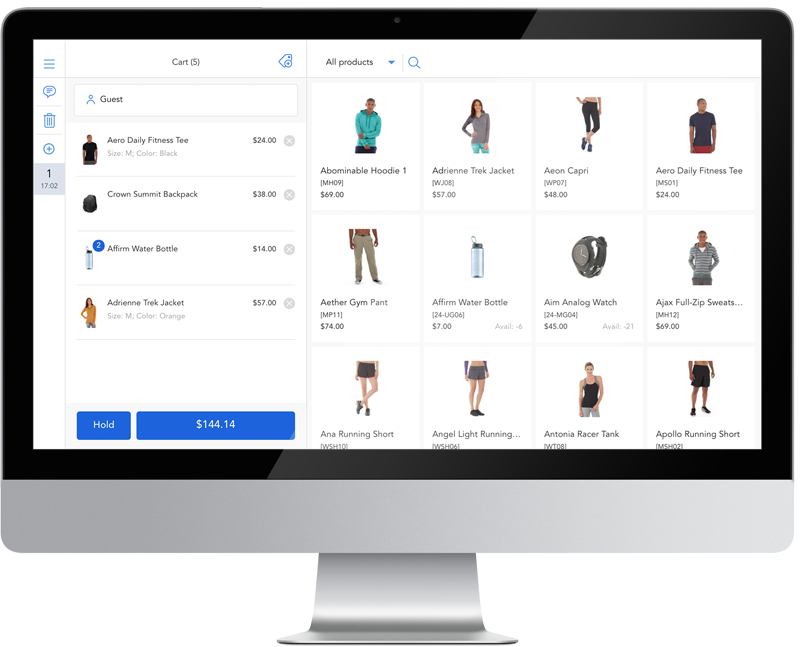
Magestore POS offers a comprehensive set of solutions to help merchants manage orders and inventory efficiently across all sales channels:
- Quick and simple checkout process
- Refund, exchange, cancel, hold orders, and reorder
- Support for a wide range of payment methods and payment gateways
- Support for multi-location selling
- Inventory management with integrations to all popular social media platforms and marketplaces
- Support for reward points
- Gift cards
- Sales reporting
- Receipt customization
- Multiple carts
- Integration with online shipping
- Custom sales
- Many other customizations that a custom POS offers to meet your business needs
Pros and cons
Pros | Cons |
Work for omnichannel businesses | Magestore POS requires a technical installation process because it connects directly to Magento’s backend. The setup follows Magento’s standards to ensure compatibility with other modules and system configurations. While it may take technical effort upfront, this approach delivers long-term stability and eliminates the syncing problems found in third-party POS connectors. |
Has a built-in inventory feature with online selling capability | |
Affordable subscription fees (POS for Shopify) | |
Works on multiple devices (Magento POS for iPads, tablets, Macs, and desktops; Shopify POS for iPads, tablets, Macs, and desktops) | |
Work with a wide range of hardware | |
All-round feature set for selling in-store | |
Support for all users, including trial users |
Pricing
Magestore POS for Magento:
- POS Lite: $69/month
- POS Commerce and POS Customization: Flexible pricing, depending on your specific requirements.
Magestore POS Commerce and POS Customization are sold under a one-time license, giving merchants complete ownership of the source code. The initial investment may be higher than monthly subscription models but eliminates ongoing fees. This setup enables merchants to modify, scale, and integrate the POS according to their business goals.
Magestore POS for Shopify: 02 pricing plans
- Lite: $15/ month
- Pro: $50/ month/ location
(For more specific customization, contact the Magestore team for pricing details)
2. Square POS: Best free POS for small businesses and restaurants
Square POS is a user-friendly inventory and POS system for startups and small businesses. It’s an approachable, easy-to-get-along kind of service, especially with its free plan, which is a godsend for newbies.
Plus, when you’re ready to level up, there’s a $60-a-month Plus plan waiting for you. Square’s really got your back, tracking your inventory in real time and even predicting your future needs.
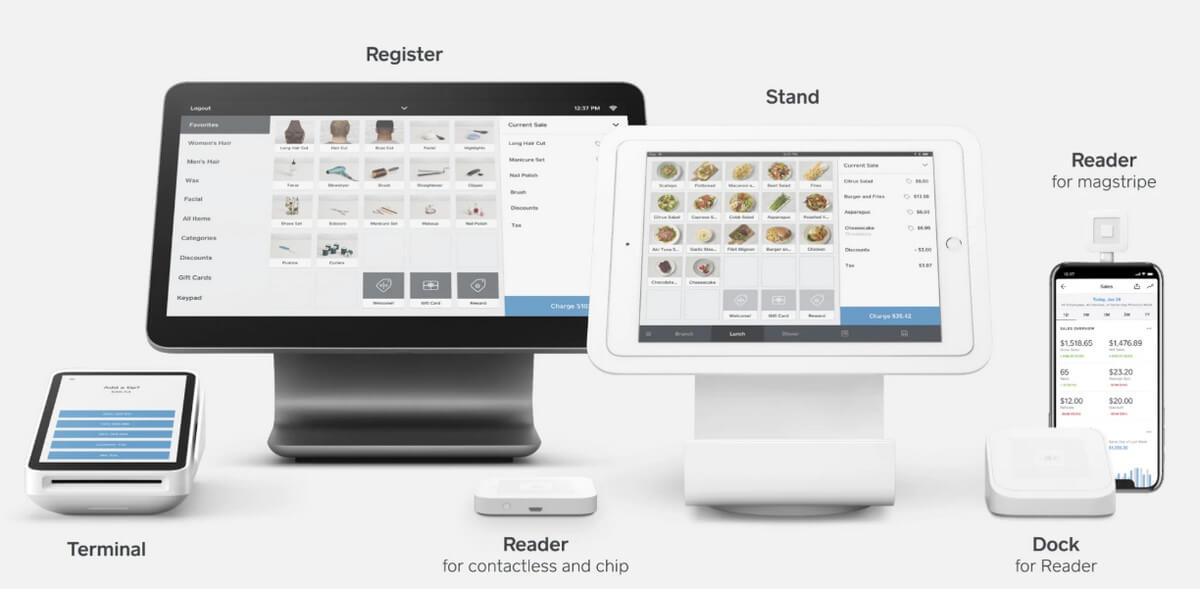
However, keep in mind the free version of Square is quite basic. We agree that this POS system with inventory management is suitable for dipping your fingers in the water, but more is needed for a swim in the long term.
Suppose you’re looking for advanced features only available in the highest paid version, such as:
- Automatic purchase orders
- Stock forecasts
- Cross-location bulk transfer
- Inventory by category
- COGS tracking
- Creating and printing barcode labels
- Adjusting stock transfers
- Purchase order management
- etc.
In that case, Square will nudge you toward a more expensive option for each additional feature you require. And other processing fees have climbed a bit, ranging from 2.6% to 3.5% plus 15 cents.
In our opinion, Square is a stellar choice for small businesses eyeing a cost-effective point of sale system with inventory. But for the big players seeking multiple features, users, locations, and advanced inventory, it might be wise to scout for alternatives to Square.
Pros and cons
Pros | Cons |
|
|
Pricing
- Software: Free
- Hardware: $799 or $39/month for over 24 months
- Retail plus: $89/month/location
- Retail premium: Custom pricing
- Restaurant plus: $60/month
- Restaurant essentials bundle: $153/month
3. Toast POS: Best POS for restaurant online ordering and inventory
As we step into 2026, Toast POS is still a big name in the world of restaurant POS with inventory system. It’s really cool how it gives restaurant owners a helping hand with its powerful inventory reports. What’s even better? You can customize these reports, getting the exact info you need to make smart, quick decisions and closely monitor how your restaurant is cooking.
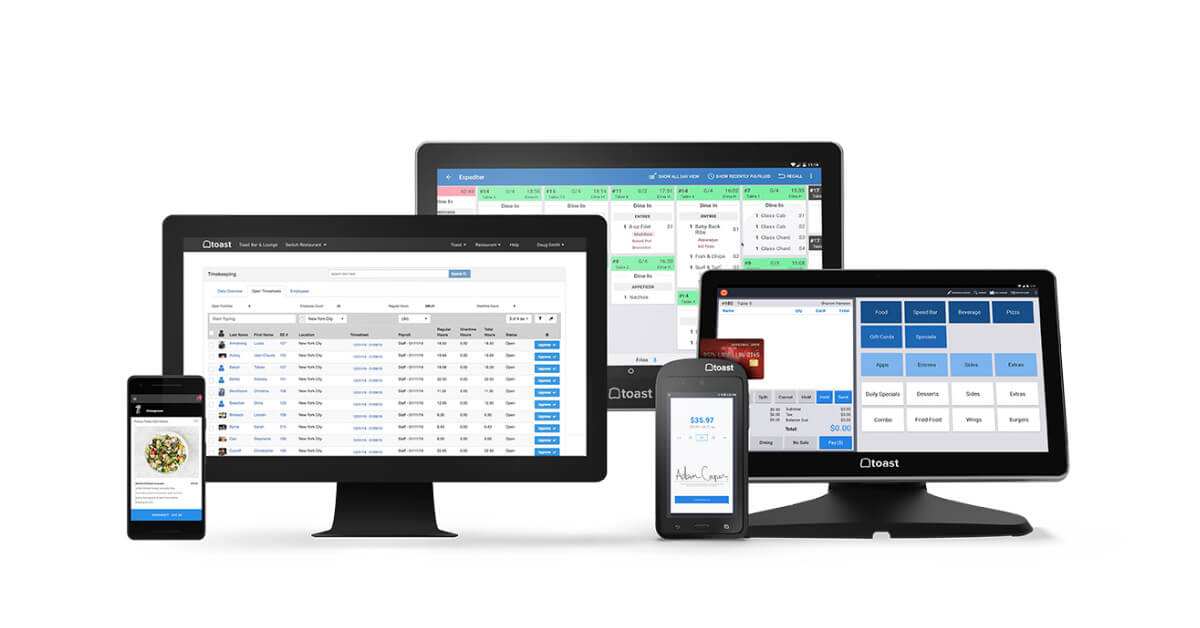
Unfortunately, there’s a snag with Toast’s offline mode. The catch is it doesn’t handle offline payments. Hence, if your internet goes down, you’re stuck because you can’t process card payments until it’s backed up.
Besides, when you choose Toast, the company also handles your payment processing. This situation, where there are no other options and the contracts are long (lasting 2 to 3 years), often frustrates customers.
Many customers feel trapped in agreements they don’t like or find that the contract terms are not what the Toast sales team initially told them. For instance, several customers have mentioned they were not aware that the processing fees could go up during the term of the contract.
For us, Toast is still a good option for any restaurant, but you need to read the contract thoroughly and understand all the details before signing. Doing this can avoid any unexpected fees that might surprise your wallet later.
Pros and cons
Pros | Cons |
|
|
Pricing
- Quick Start Bundle: $0/month, $0 upfront
- Core Plan: $69/month/device
- Growth Plan: $165/month/device
- Build Your Plan: Custom pricing
4. eHopper POS: Best POS for small retail and grocery stores
eHopper POS has made its way onto the list of best POS and inventory management systems, and it’s worth looking into why. The first thing to catch your eye might be its free plan. It’s a big deal for small businesses watching their budgets.
The free plan sounds great, but you’re limited to 50 products and 300 transactions a month. But if you’re looking for extras like table management, eCommerce, loyalty programs, pre-authorization, or customer support, you’ll need to open your wallet for a paid plan.

In general, this product could be a suitable choice for small grocery and convenience store owners who want to accept EBT payments, pass on payment processing fees to customers, and sell regulated items.
Yet, if you’re thinking about opting for a paid eHopper plan, you must be aware of possible extra charges. These could include fees for POS hardware, additional features, and the number of terminals you use. There is no refund if you change your mind mid-way. Thus, giving it a whirl on a month-to-month basis first is a smart move.
Pros and cons
Pros | Cons |
|
|
=>> You might like: How to Create SKU Numbers? SKU vs UPC
Pricing
- Essential: $0/month/50 products/300 transactions (Card processing with eHopper only)
- Freedom: $34.99/month
- Restaurant: $39.99/month
- Omni channel: $59.99/month
5. Heartland Retail POS: Best POS for medium-sized data-driven businesses
Heartland Retail POS inventory management software can make life easier for store owners who want to increase their sales and profit. It’s really into the nitty-gritty of analytics, offering real-time inventory updates and daily recaps that are a cut above most POS out there.
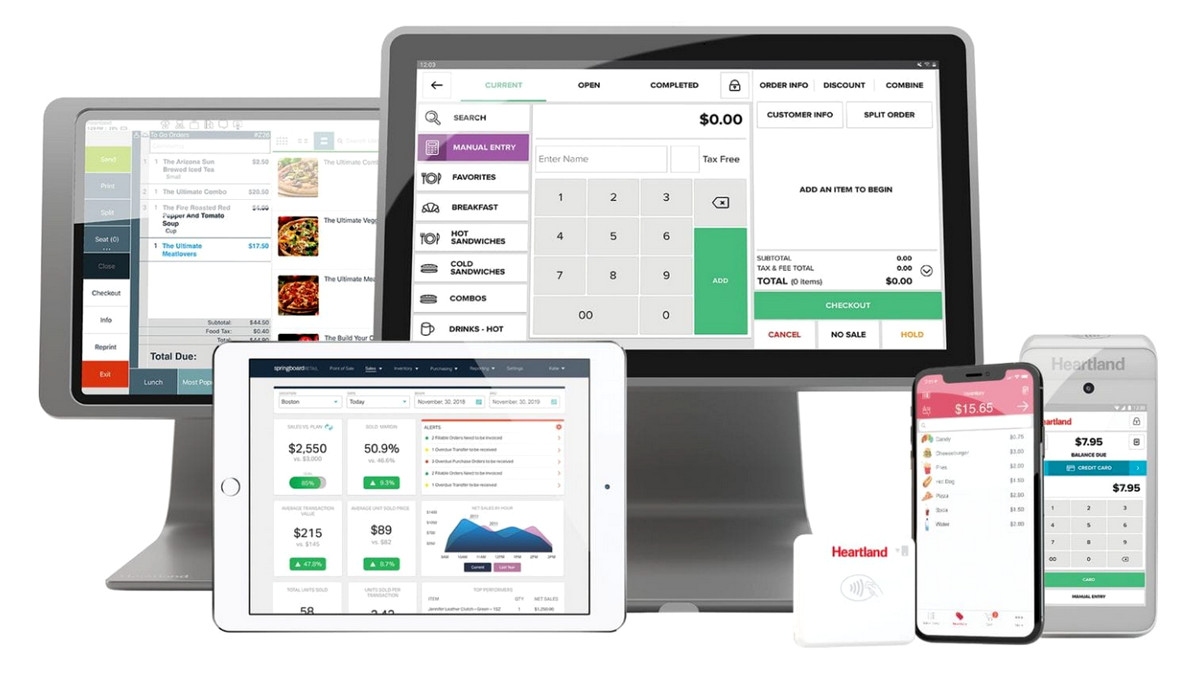
For newbies, it’s not the most flexible when it comes to adding extra features or integrations, which might be a bummer if you’re looking for an inventory POS software you can tweak to your heart’s content. Furthermore, how it calculates payment processing fees can be a wildcard, especially if you’ve got a bigger team, which could mean a heavier hit on the wallet.
Pros and cons
Pros | Cons |
|
|
Pricing
- Start from $89/month/station | Contact for a custom quote.
=> Read more: 4 inventory management software for apparel retail in 2026
8 must-have features of POS inventory system
When you’re in the process of selecting a POS system integrated with inventory for your business, there are 8 essential features that you should absolutely consider:
1. Sales transaction processing: The point of sale inventory software is a high-tech cash register that does it all – scans your products, calculates prices with all those taxes and discounts, and takes payments in every form imaginable.
2. Inventory management: Every time you sell something, the system updates how much stock you have left. This way, you’re always in the know about your inventory, avoiding the headache of running out of stock or having too much.
3. Real-time data analytics and reporting: Think of your retail POS and inventory management software as a mini genius that crunches numbers for you. It keeps tabs on what’s flying off the shelves and not, giving you the lowdown on your customers’ favorites. This insight can really steer your business decisions in the right direction.
4. Integration with other systems: Do you have other tools you use for your business? Then, you need a point of sale and inventory software to shake hands with them. Whether it’s your accounting software, CRM, eCommerce platform, or online store, it must all be connected.
5. Multi-location management: If you’re running more than one shop, no sweat. POS inventory software lets you keep tabs on stock across all your locations from one spot.
6. User accessibility and mobility: With the latest POS technology, you’re no longer stuck at the counter. The best retail inventory software understands we’re always on the go. Merchants can now manage sales and monitor inventory from phones or tablets, no matter where they stand.
7. Customer management: Some POS systems are like your personal assistant. They help you keep track of who’s buying what, which is excellent for setting up loyalty programs or just giving that personal touch that keeps customers coming back.
8. Supplier and purchase order management: And for the cherry on top, point of sale and inventory system lets you manage supplier details and whip up purchase orders right there and then.
Why do you need a POS and inventory system integration?
The integration between your Inventory Management and POS system leaves plenty of good points.
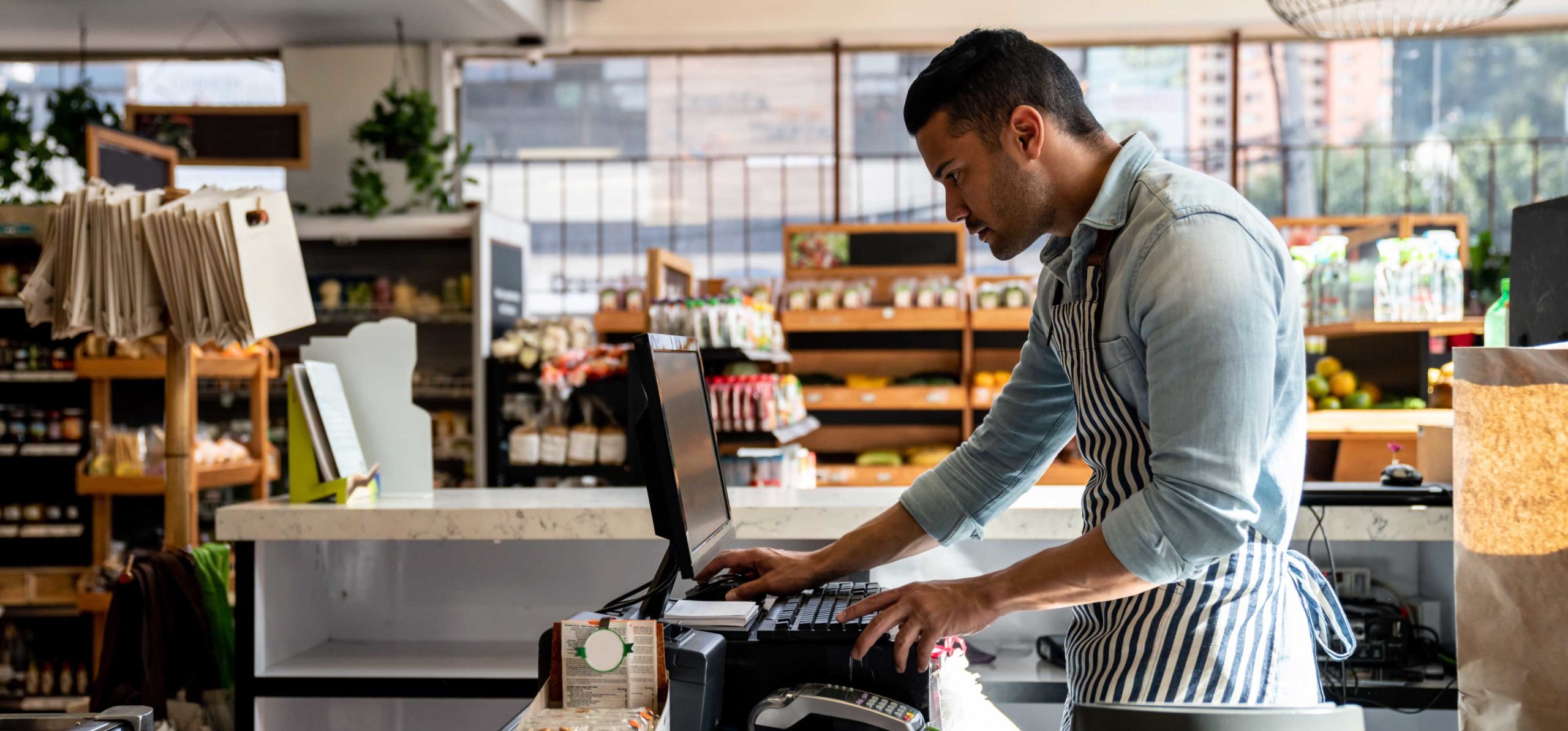
1. Save time and reduce costs
- Quickly finalize an order and have faster checkout processing. No need to wait for a long time. Your customers will enjoy a quick and accurate checkout at an effective retail POS system. Every item with a barcode can be easily scanned and tagged. Sometimes, just carrying an iPad or iPhone-enabled POS system with a credit card reader is enough.
- Track goods with high accuracy and speed up Inventory management. With inventory and a barcode scanning system, you do not have to worry about how much inventory you have on hand. The POS system keeps track of that and you have information at a glance.
🔔 Don’t miss this chance to explore one of the best barcode solution for Shopify
- Minimize the chance of human errors. POS Inventory management system allows the business owners to have multiple sales locations and track inventory at each location without being present. The boss can be away and no longer worry about employee theft. The efficiency of the staff can be maintained.
- Prompter payroll processing. The system will automatically calculate the payroll and can even print out payment slips to your employees. No longer manually logged.
- Find data without receipts. You can search for any transaction you want by using the search engine, no matter how long the transaction is.
=>> Also read: What is a good inventory turnover ratio for retail?
2. Get updated and close management
- Updating sales reports. Do not guess the sales trend, a good retail POS system provides you with up-to-the-minute sales reports for the day, week, month, or year. It will show you the background of your business.
- Real-time inventory tracking management. The system will warn when you’re too low, complete the PO, and track your providers. A complete tracking system helps you know what is going on in your business.
- Market analysis to keep up with the trend. Know what are the best sellers and who’s selling the most? The reporting capabilities of the POS system can take care of that and help you make informed sales decisions.
- Staff management. The program helps you check who’s coming in early and who’s slacking off.
3. Improve CRM
- Upgrade customer data. Updating customer information has never been easier. You can send emails about campaigns and special occasions or sale-off programs to your customers.
- Reward point. Know your customers better by tracking what they buy and giving them points for each sale. That point will keep customers coming back for more shopping.
- Customer loyalty programs. Loyalty programs are to encourage repetitive transactions and increase your average customer base. Discounts, coupons, and gifts can be easily managed for loyal customers.
4. Be smart, cool and modern
- IPad-based POS System. Smaller than your typical POS system, iPad-based systems quickly replace large and cumbersome systems.
- Handheld POS system on iPhone. Use your POS system with you wherever you go by turning on the iPhone.
- A farewell to login. No need to manually write orders and count inventory anymore. You will also help the environment.
Unlocking the potential of POS and inventory system integration is just the beginning. Imagine the broader impact when seamlessly integrating with accounting, shipping, and ERP systems.
At Magestore, we prioritize integration, ensuring our POS and RMS work harmoniously with diverse software and hardware, optimizing your entire business operation. Curious about the possibilities? Explore the seamless integration Magestore offers.
3 steps to integrate Magento POS with inventory
You should know that the unique business model of online-offline integration provides a consistent experience, simplifies processes and daily operations to improve customer relationships.
Moreover, each business, whether small or large scale, faces managing a huge order every day. Not only does it require POS to complete the order quickly, but it is also now more necessary to integrate your point of sale with an inventory management system. Retailers can easily track the amount of merchandise available and quickly update their data, as well as enhance the customer shopping experience. In order to make this union a success, implementing POS or tablet-based POS is a viable option.
Now, if you already have a POS system and are looking for an inventory solution to integrate into your existing system, you should be able to do everything on this list and then some. To help you find the best POS system for inventory control, consider taking the following steps.
Step 1. Find POS inventory integration solutions designed for Magento or Shopify merchants
If you don’t have an existing POS system, let’s “surf” around on marketplaces and find POS solutions made for Magento or Shopify, depending on your platform. Notice that it needs to have full feature lists including integrating with inventory management. Therefore, you’ll likely run into fewer headaches when setting up and running your retail store.
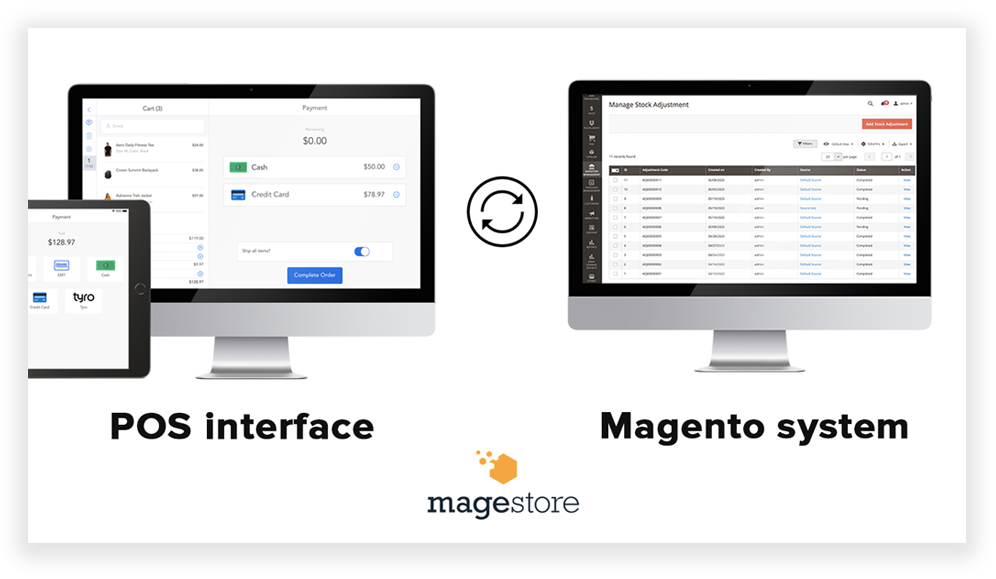
Step 2. Hire experts or choose third-party integrations
Retail businesses who find a POS system can’t find a direct integration or recommended add-on partner. One option for them is to talk to POS experts who will solve all messy problems for you.
Besides, to keep up with retail trends nowadays, a lot of suppliers are providing the omnichannel solution. That is one single system to centralize all of your inventory, orders, customers, and purchases across online and offline stores. They provide many modules including POS and inventory management so that to save time and cost, retailers can consider buying the whole one omnichannel solution instead of buying sporadically.
There are many really good providers out there, including MicroBiz and Ebizmarts, etc, but Magestore is not an exception. It also provides POS solutions for Magento and Shopify, that are easy to set up and a joy to use. With a POS system, you can sell in minutes, easily track your profits, manage products, and take control of your inventory and customer loyalty.
- Quick, smooth, and accurate order processing
- Multiple payment methods
- Streamline inventory management
- Enhance reward & loyalty system
- Better order tracking and in-store management
=> Further reading: eCommerce POS integration – How to connect online and offline sales
Step 3. Create your own integration
Can’t find a solution that works for your own? Setting up a custom module for your business is a good idea.
However, this step requires you to have access to your POS system’s API in order to build an integration for it.
Additionally, building your own module can get highly technical so if you’re not adept at developing software, don’t hesitate to talk to an expert.
Our product, Magestore POS, is a powerful PWA POS solution for Magento and Shopify to provide an omnichannel experience by synchronizing POS, inventory system, and eCommerce.

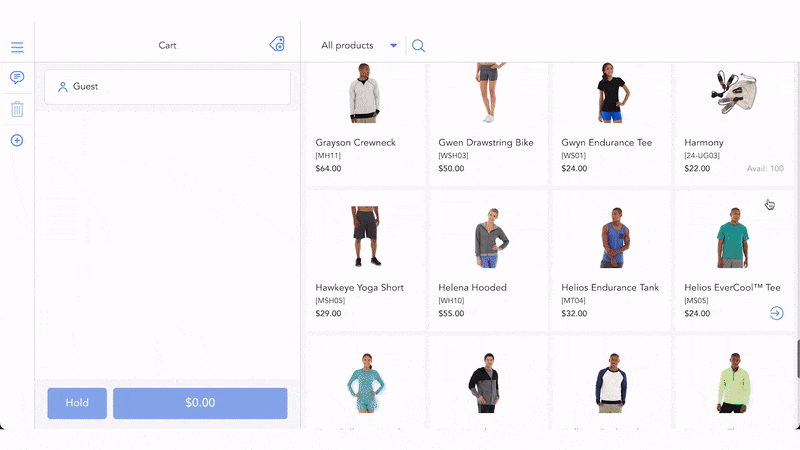

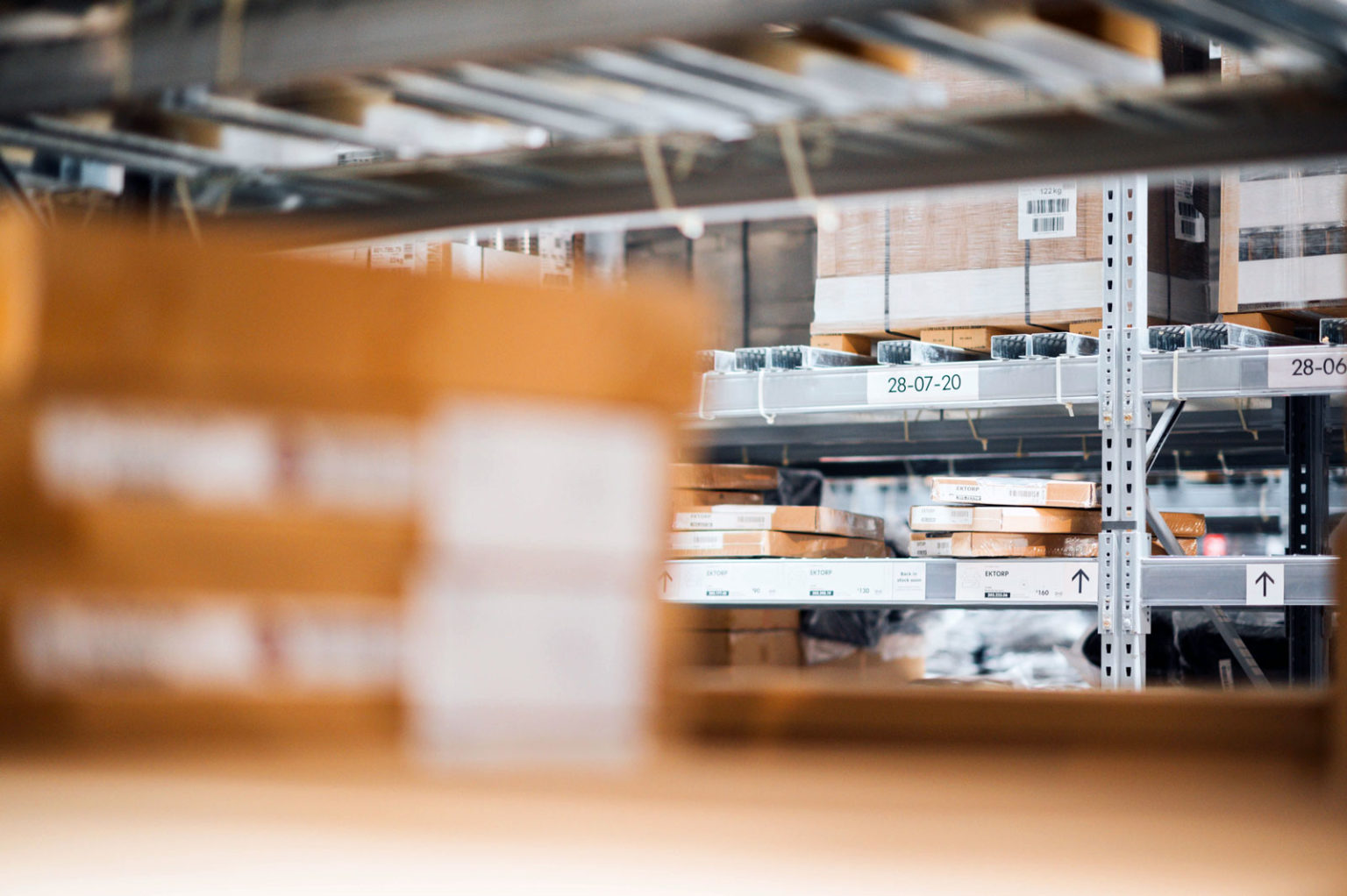
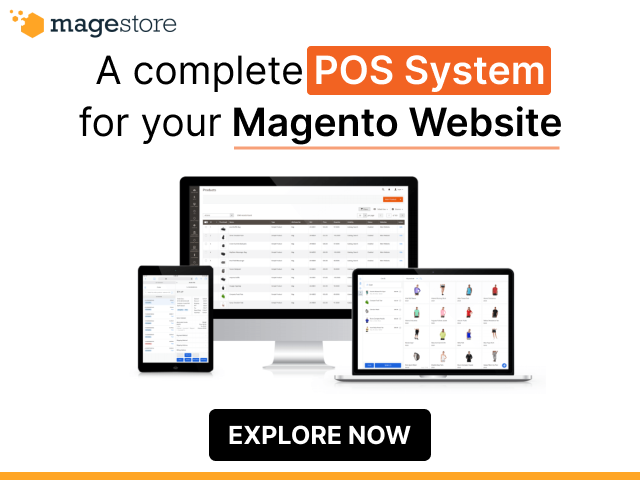


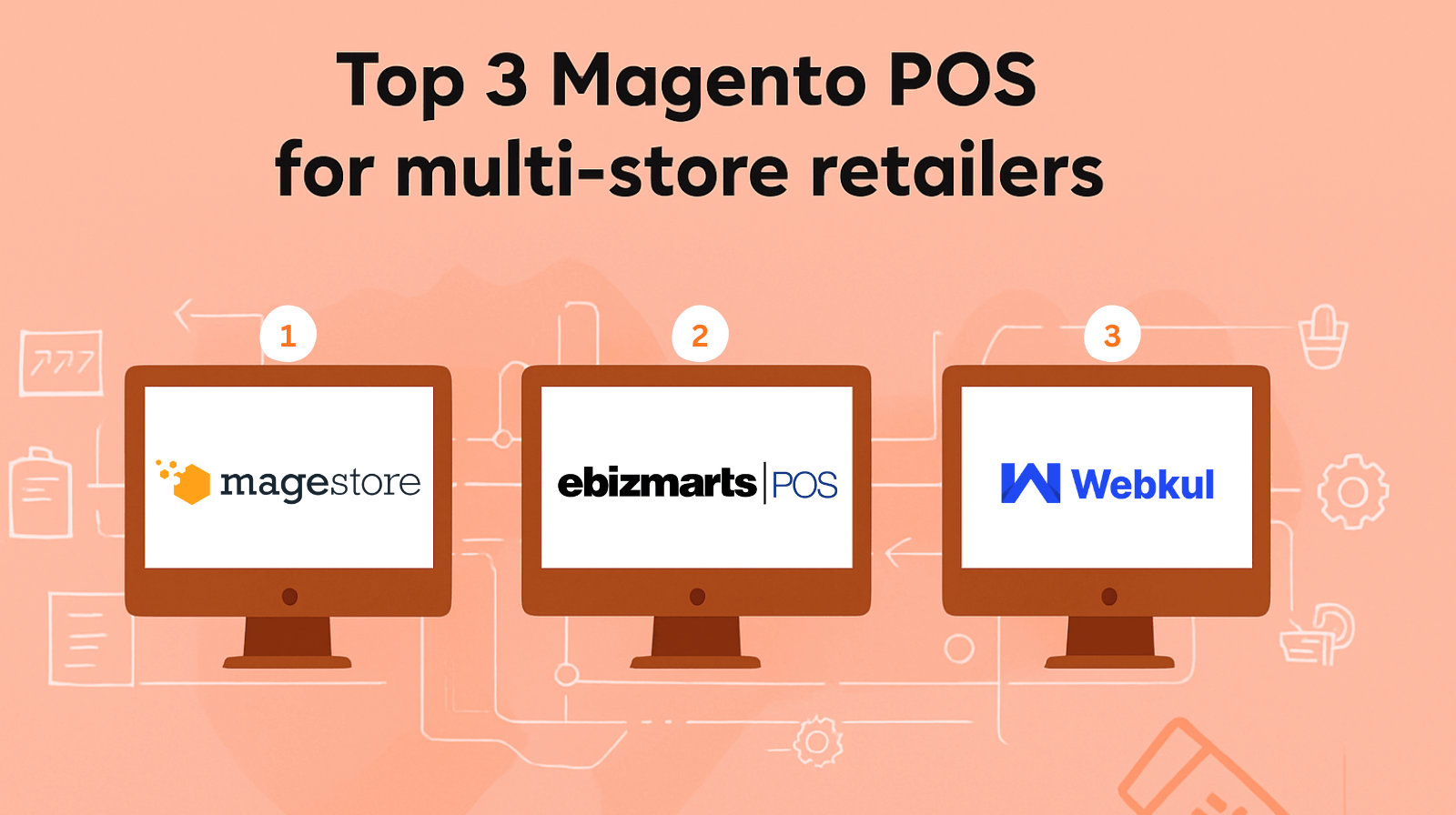





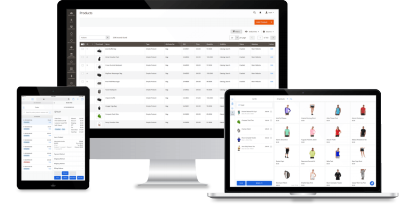

Just doing research for a new inventory management system or even a new pos system with a intergraded item level inventory management system.
Hi Billy, Please reach out to our agent by clicking the Book Consultation in the right corner or follow this link: https://www.magestore.com/book-consultation/
I hope you can have the answer you are looking for
This is a great post! I’m currently working on integrating a POS system into my business and this article has given me a lot to think about. Thanks for sharing!
Hi my company is looking at changing to a new system, we often have customer part pay for sales orders and then they are dispatched after payment. is this something your system can do?
Hello Georgia,
Thank you for getting in touch with us! Our POS solution enables customers to make partial payments for their orders. To tailor our solution to your specific workflow, could we kindly ask you to schedule a consultation with us? This way, we can gain a deeper understanding of your process. You can easily sign up for a consultation on our dedicated page: https://www.magestore.com/book-consultation/
Looking forward to assisting you further!
Warm regards,
Jackie